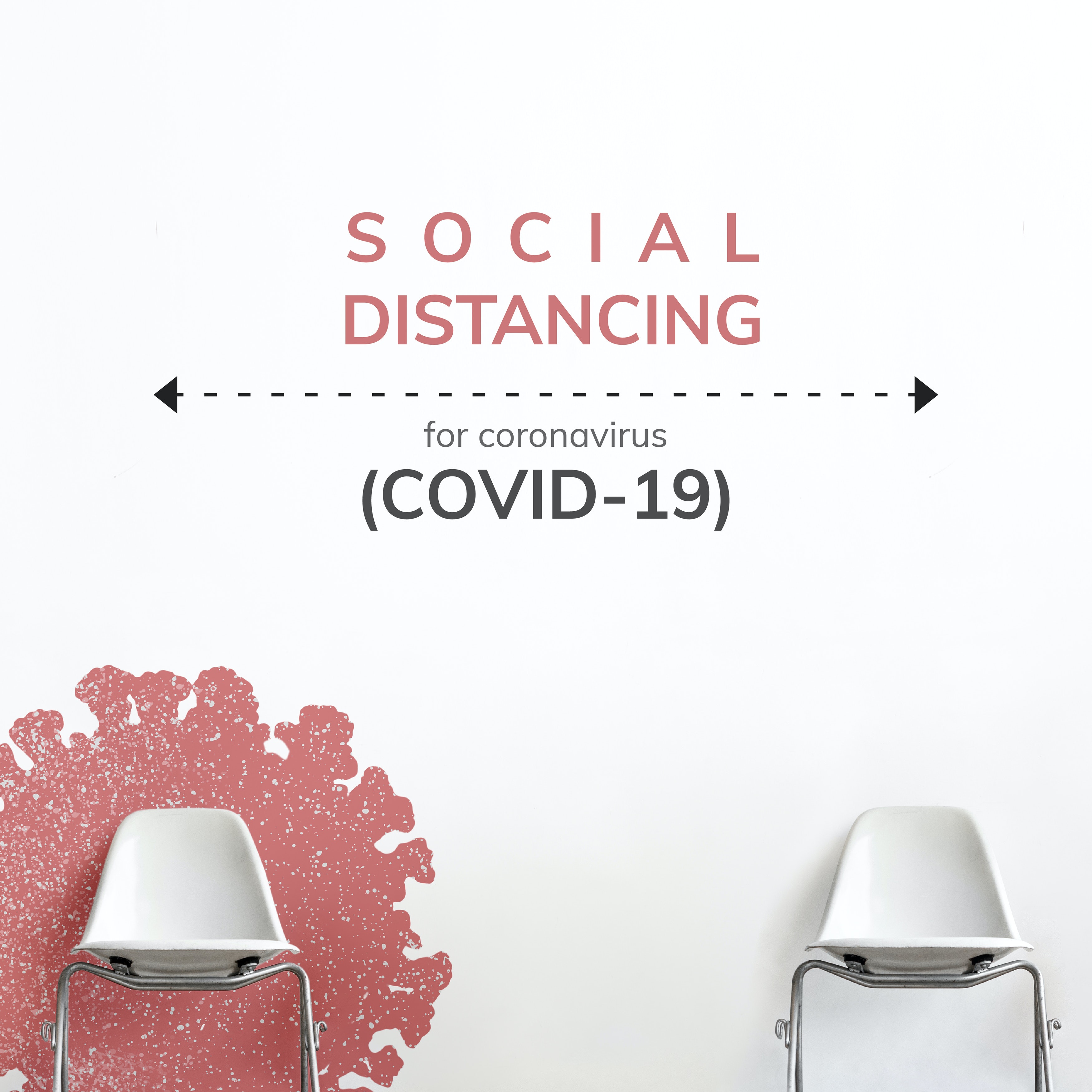Preventing the Spread of COVID-19 Within HOA Communities

Overview
On March 11, 2020, the World Health Organization declared the outbreak of COVID-19 (the medical condition caused by the novel coronavirus SARS-CoV-2) a global pandemic. Mitigation measures such as “social distancing” began around the globe soon after. Early efforts in the United States included the cancellation of large events, work-from-home initiatives from employers, and removal of tables and chairs from cafes to discourage patrons from congregating in close proximity.
Within a matter of days, voluntary social distancing guidelines evolved into shutdowns of “non-essential” businesses. Many state governors have issued stay-at-home orders limiting residents’ outings to indispensable activities like grocery shopping and healthcare appointments. These seemingly drastic measures are intended to protect the portion of the population considered most vulnerable to COVID-19—individuals over 65 and those with preexisting medical conditions.
HOAs and condominium associations have an important role to play in slowing the spread of COVID-19. By applying the Center for Disease Control and Prevention (“CDC”) recommendations in the planned community setting, board members, owners, residents, visitors, and employees can help prevent illness in their communities and keep their loved ones, friends, and neighbors healthy and safe.
What Board Members and Owners Can Do:
Disinfect common areas and facilities.
Before disinfecting a common area, the CDC suggests opening outside windows and running fans for 24 hours (or as long as reasonably practical). Surface areas can be sanitized using most household disinfectants containing bleach or a comparable sterilizing agent. The CDC recommends cleaning hard, dirty surfaces with soap and water before applying a disinfectant.
Postpone non-essential maintenance.
HOAs and condominium associations should consider delaying maintenance activities that are not essential to the community’s operations or the health and safety of residents—particularly if the maintenance involves close contact between workers or between workers and residents.
Inform residents of social distancing recommendations and protective measures.
Community associations should keep residents up-to-date on measures taken by the board to prevent the spread of COVID-19. Ideally, notice can be provided electronically, via email or text message, though paper notice should also be provided to any residents who cannot be reached electronically.
Along with information on the board’s response plan, a notice to residents could also include symptoms and high-risk factors associated with COVID-19 and tips for avoiding the virus.
Instruct workers to protect themselves and residents.
If feasible, a board should require or encourage workers to wear face masks, wash hands frequently, and cough and sneeze into a tissue. Workers should be instructed to stay home if they are feeling sick or have a fever.
Limit unnecessary workers.
Community associations should consider temporarily limiting staff to positions essential to the association’s operations. Even in areas that are generally essential, like landscaping, an association can employ smaller teams of landscapers and encourage workers to stay at least 6 feet away from one another.
Restrict access to non-essential gathering areas and facilities.
If a community has common areas where residents and guests are likely to congregate—like a pool, pool house, playground, or community center—access may need to be temporarily closed or restricted to promote social distancing. Emergency orders issued by state and local governments can be a good source when developing an emergency policy on community gatherings.
Cancel public events.
During the emergency, community events should be canceled, postponed, or conducted virtually through video-conferencing services like Zoom or Skype. If virtual attendance is not possible, events can be postponed indefinitely and rescheduled when daily life returns to normal.
Conduct all community meetings virtually.
Depending on applicable state law and the community’s governing documents, it may be possible to conduct board or member meetings virtually via online video conference. Zoom is a popular option for conference calls and multi-participant webinars, and Skype offers an easy-to-use video conferencing service. Meetings held virtually can also be recorded and made available to residents afterward.
Limit non-essential visitors.
Although initial reports from China suggested that person-to-person spread of the novel coronavirus was limited, the virus is now believed to be primarily transmitted between individuals through respiratory droplets. Further compounding the potential for contagion, asymptomatic individuals carrying the virus are believed to be capable of unknowingly transmitting it to others.
For these reasons, social distancing may be the most impactful measure communities can take to prevent and slow the spread of the disease. To promote social distancing generally and to comply with state and local government directives, community associations may wish to issue guidance to residents recommending limitations on non-essential visitors.
What Residents Can Do:
Stay home!
The most effective way to protect yourself, your family, and your neighbors from COVID-19 is to stay at home. All but a handful of states have issued variations of stay-at-home orders, which generally require residents to remain at home unless they have an essential job function or are conducting an essential activity (like going to a grocery store, pharmacy, or healthcare provider). The progress many communities have made in slowing the spread of COVID-19 has been attributed to these efforts.
Wash hands frequently.
COVID-19 is primarily transmitted through respiratory droplets, which spread the disease from one person to another. This spread often occurs through actions like shaking hands, speaking close to an infected person, and touching contaminated surfaces.
The CDC urges everyone to wash their hands thoroughly for at least 20 seconds using soap and water. Proper handwashing includes the front and back of the hands, wrists, fingers, and fingernails.
Avoid touching your face, mouth, and eyes.
Most of us don’t realize how often we touch our faces. When it comes to avoiding COVID-19, keeping your hands off your face and away from your mouth and eyes is vital. If you need to touch your face, mouth, or eyes, thoroughly wash your hands for at least 20 seconds first.
Cover your nose and mouth with a tissue when sneezing or coughing.
When you cough or sneeze into your hands, your hands become covered with respiratory droplets, which can then be deposited onto shared surfaces like doorknobs, light switches, grocery carts, and ATMs. If the respiratory droplets contain novel coronavirus, those shared surfaces can lead to viral infection in any other individual who touches them. Coughing or sneezing into a tissue which you then discard in a lined trashcan can significantly reduce the risk of viral spread.
Limit visitors.
Whether or not your community or state has issued visitor-limitation guidance or requirements, voluntarily limiting visitors can help protect your family, friends, and neighbors, and yourself. While regular social interaction is a key component of mental health, video calls to loved ones using FaceTime, Facebook’s video-call feature, or Skype or Zoom for multi-person video calls can serve as a temporary substitute until the pandemic passes.
When visits do occur, the involved parties should wash their hands frequently, observe appropriate cough and sneeze etiquette, and wear a mask or face mask if the circumstances dictate.
Maintain social distance from neighbors.
We all need a little outdoors time now and again, and it’s nice to say hello to the neighbors. For the time being, though, it’s a good idea to stay at least six feet from any other people you happen to encounter while taking a jog or walking the dog.
Avoid common areas.
If your neighborhood has a park, playground, pool, or community center, it’s best to avoid those areas until social-distancing measures in your state are lifted.
What Workers Can Do:
Wash hands frequently.
Workers need to wash their hands for at least 20 seconds after using the bathroom, eating, starting or finishing a project, or contacting frequently touched surfaces. Doing so will help to keep you healthy and prevent the spread of the disease
Disinfect frequently touched surfaces.
Using a disinfectant cleaner (most household disinfectants are suitable) to wipe down any frequently touched surfaces like doorknobs, phones, and light switches protect workers and help prevent the spread of COVID-19.
Watch for symptoms and stay home if you are sick.
Any employee experiencing symptoms of COVID-19—such as cough, fever, excessive fatigue, or difficulty breathing—should contact his or her supervisor and medical provider and not report to work.
Avoid close contact with co-workers and community residents.
Engaging in social distancing—staying at least six feet away from individuals outside your household—is crucial to preventing and slowing the spread of COVID-19. If a resident approaches you while you are working, kindly remind him or her that for both of your safety, you should maintain a distance of six feet or more from one another. This is also true for co-workers to the extent possible.
Wear a face cover.
Because it’s not always possible to maintain adequate social distance, workers should wear a face mask whenever possible. New evidence suggests that the COVID-19 virus can live in the air for up to 3 hours.
While our busy world is put on pause in so many ways, we are reminded of how interconnected we are with one another. Each person’s actions have the power to impact an entire community—for better or worse.
By implementing guidelines provided by state and federal government, we can protect ourselves, our families, and our communities. In this war against an invisible enemy, we all have our crucial part to play.
CDC’s Printable Flyers & Resources
Steps to help prevent the spread of COVID-19 if you are sick
What you need to know about coronavirus disease 2019 (COVID-19)
What You Can Do if You are at Higher RIsk of Severe Illness from COVID-19
Implementation of Mitigation Strategies for Communities with Local COVID-19 Transmission
Alterations Services, LLC - An American company for your face mask needs.



